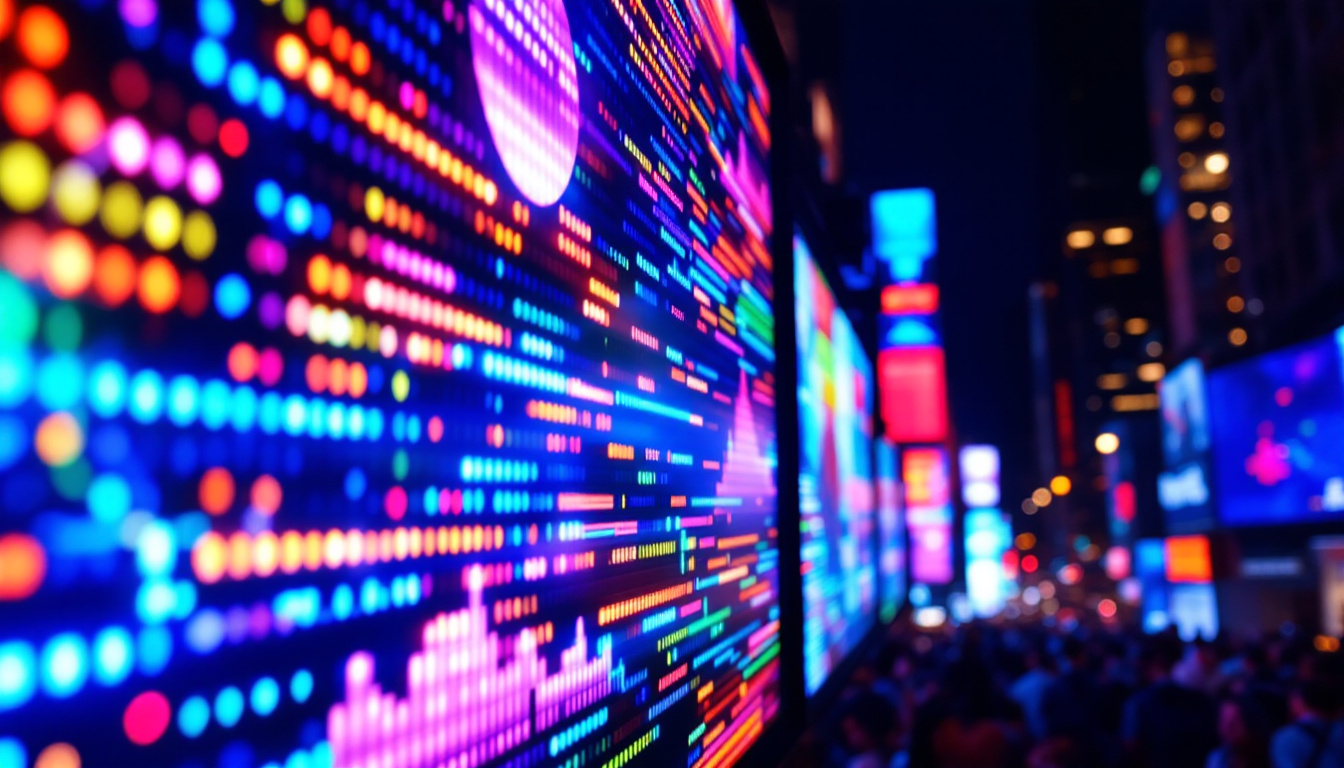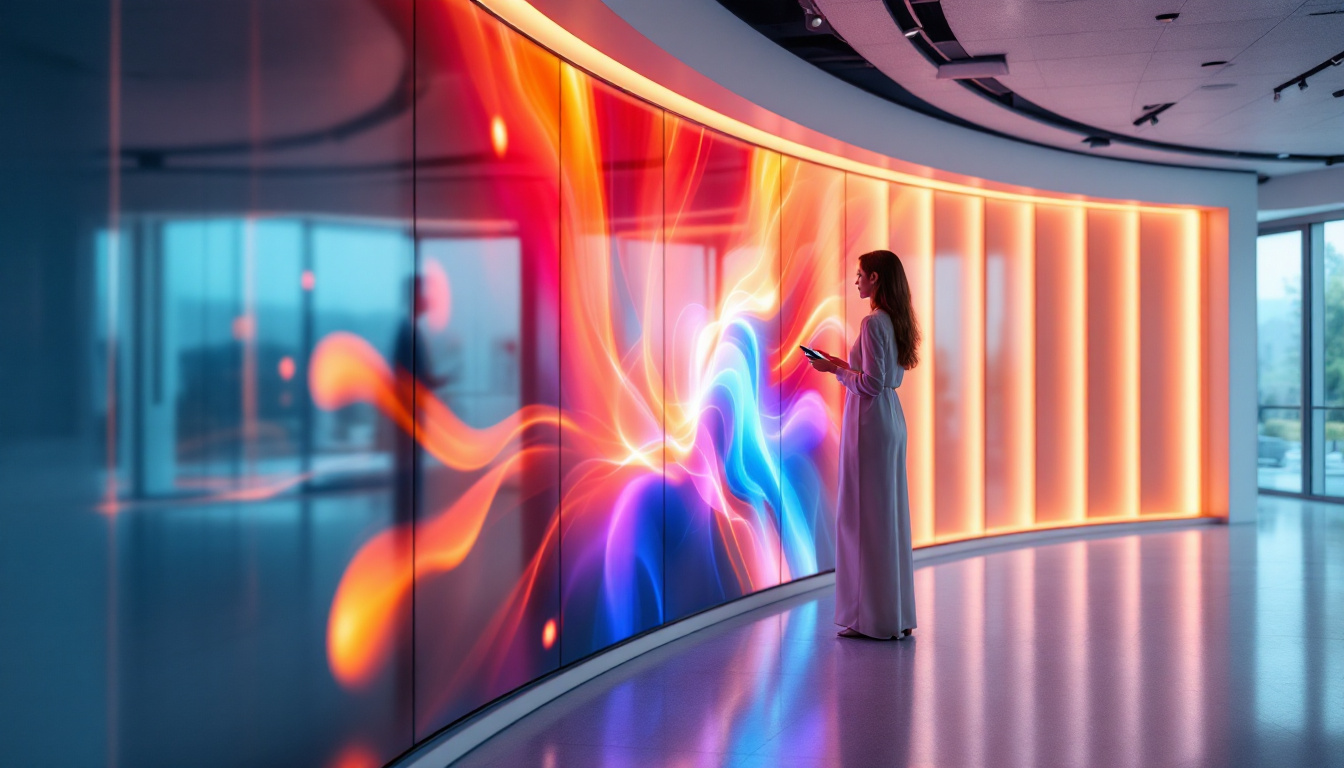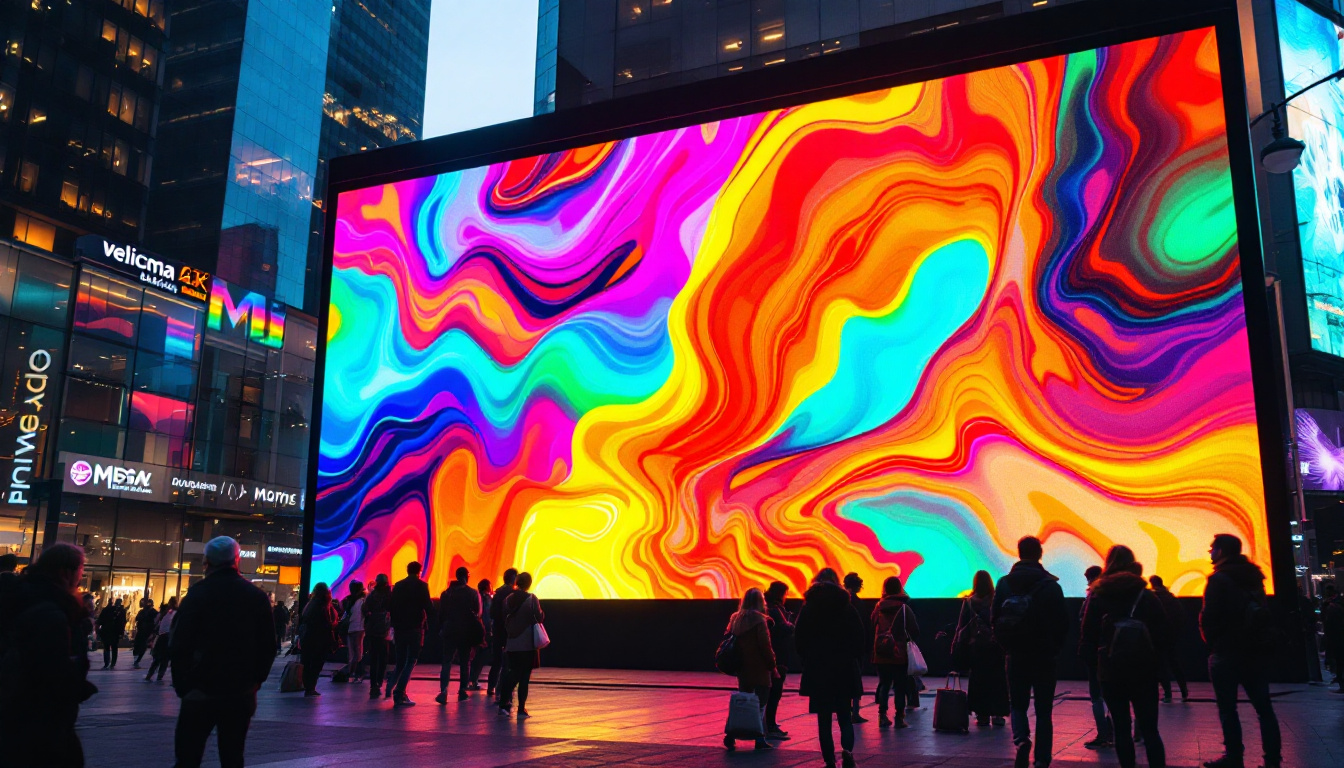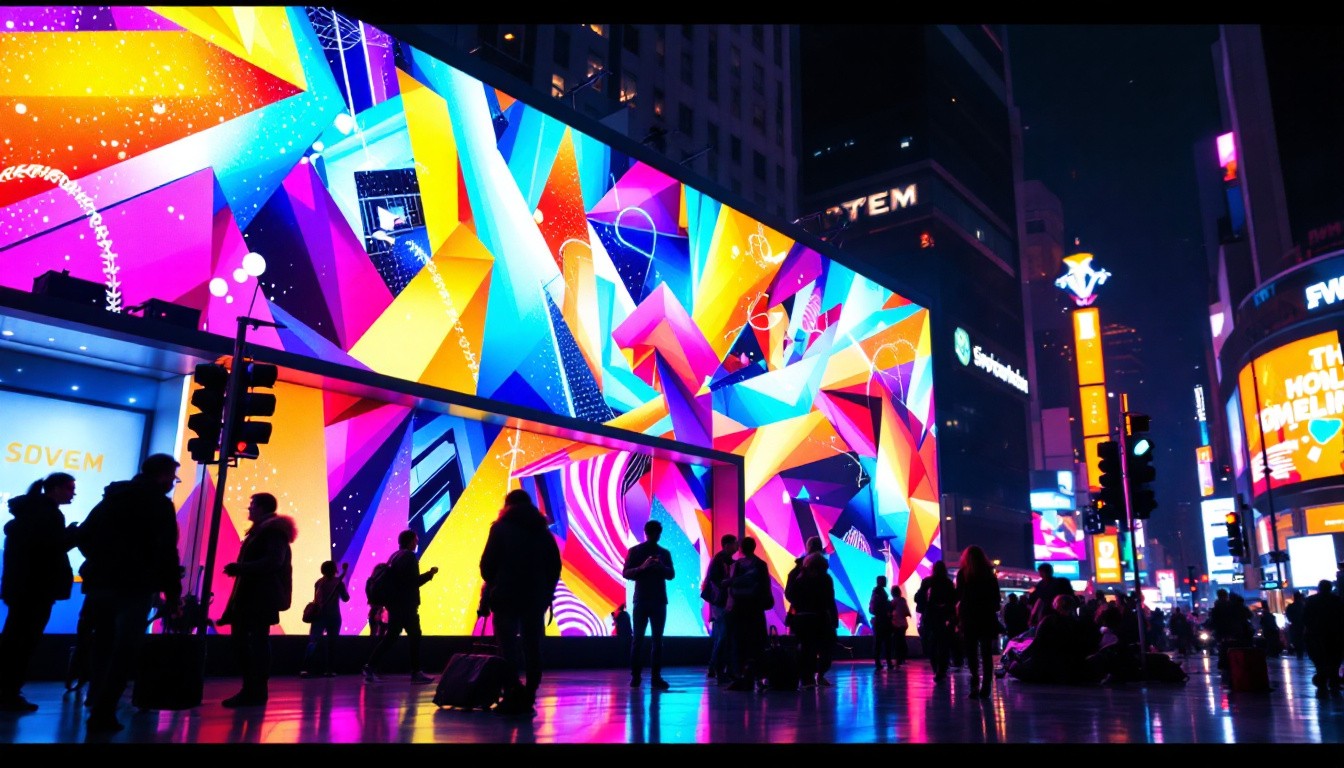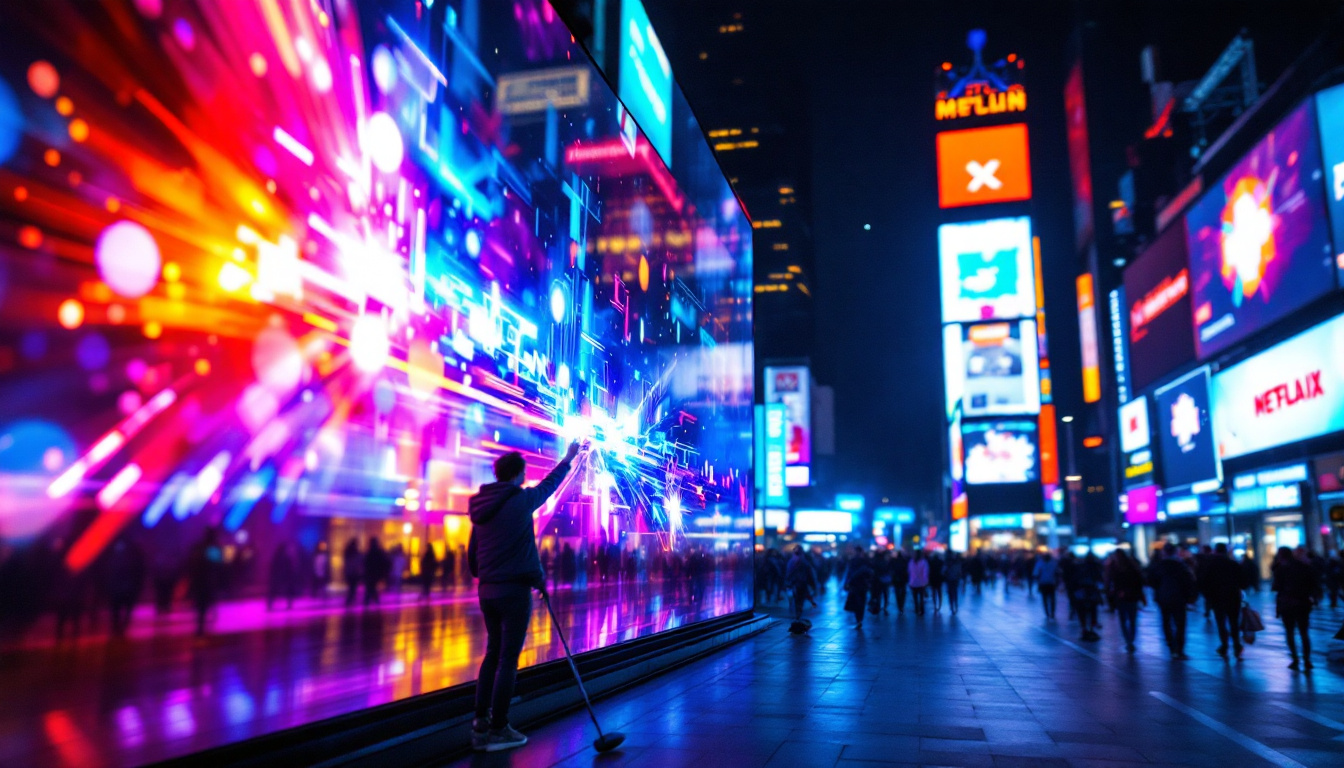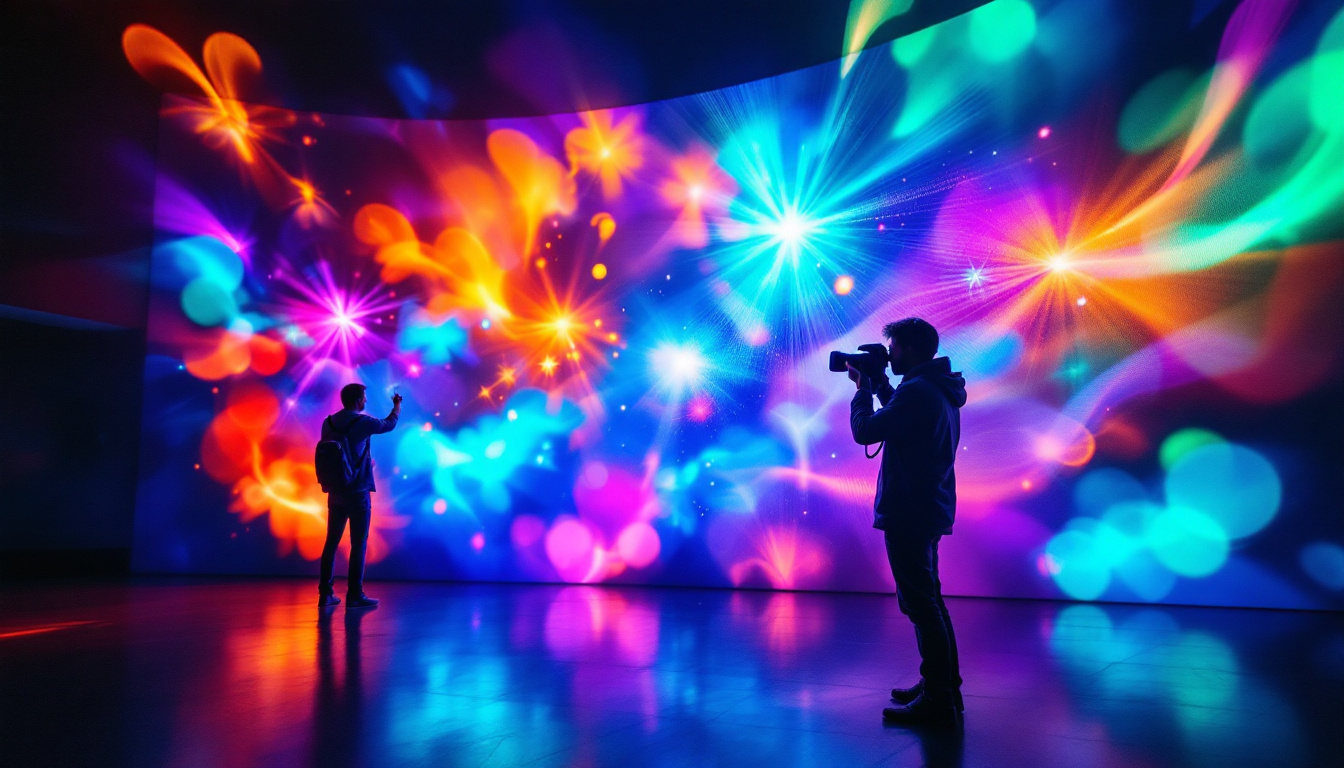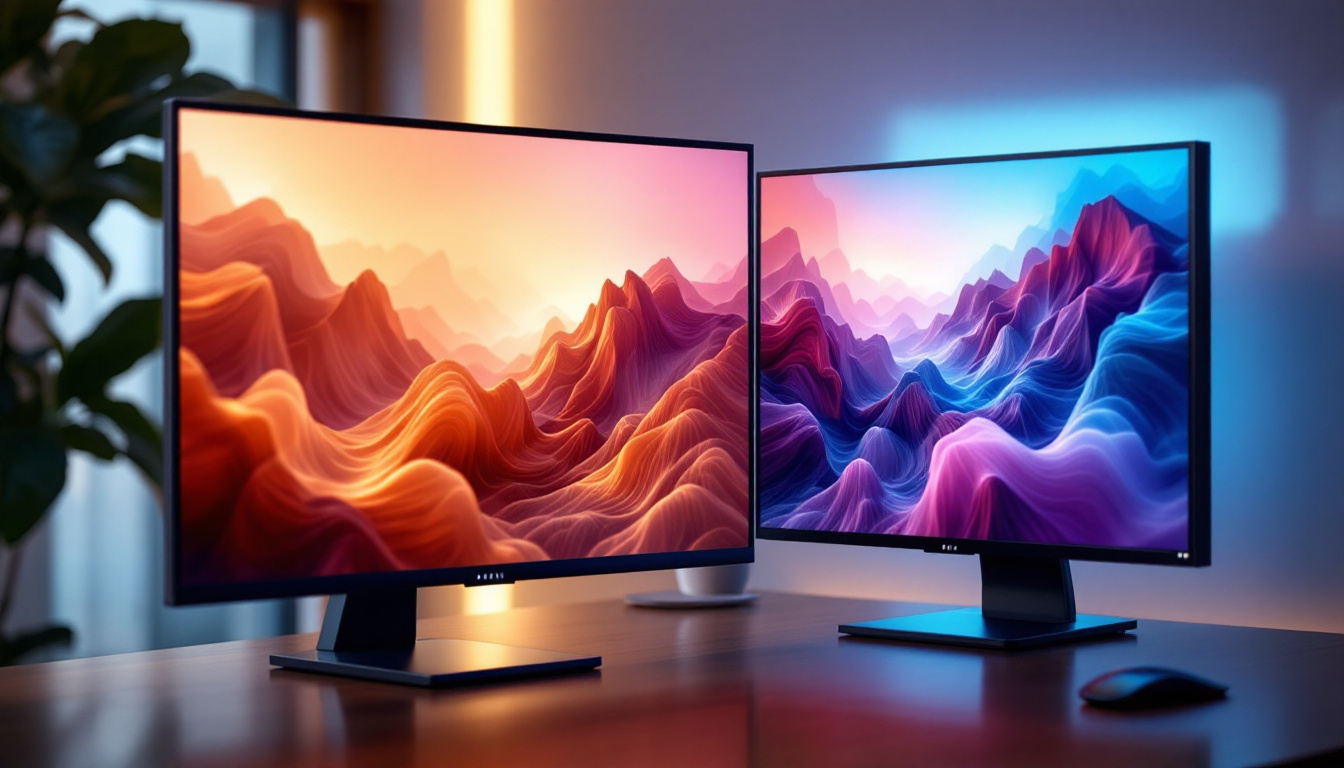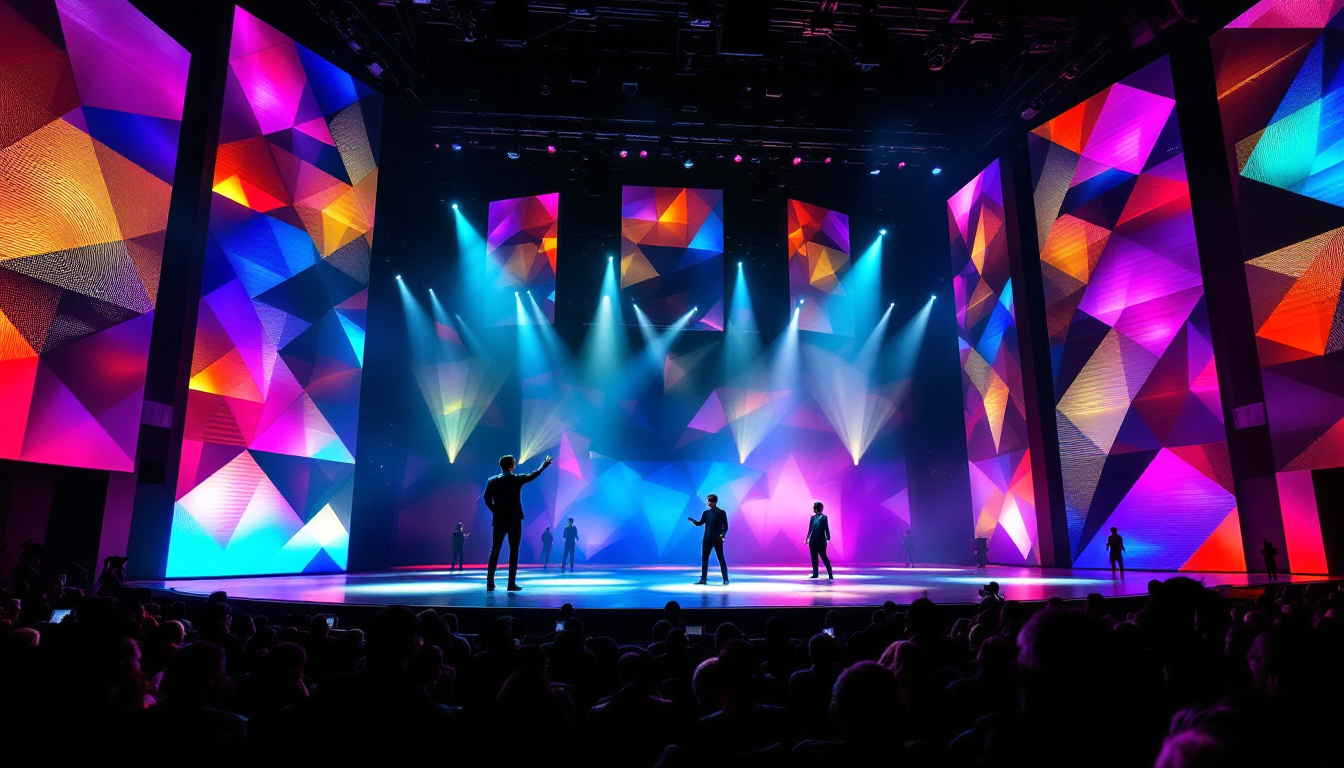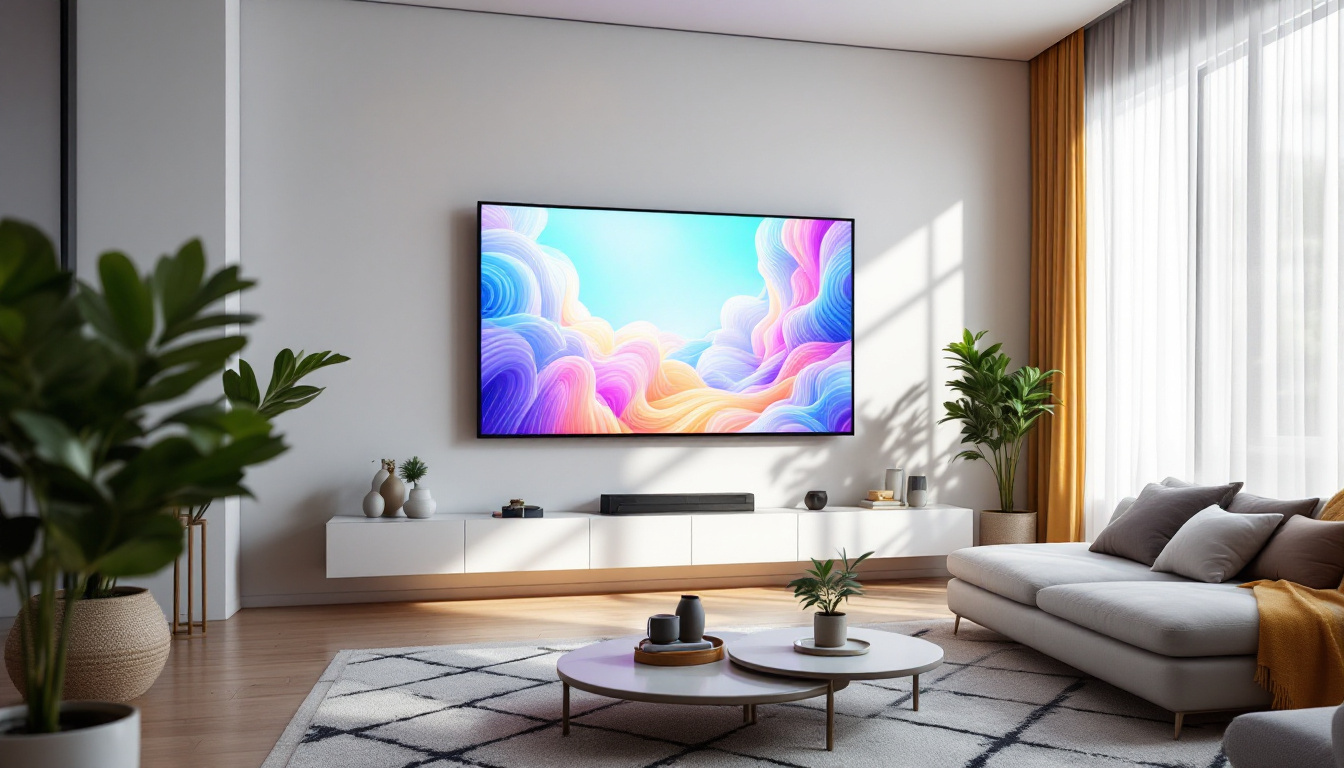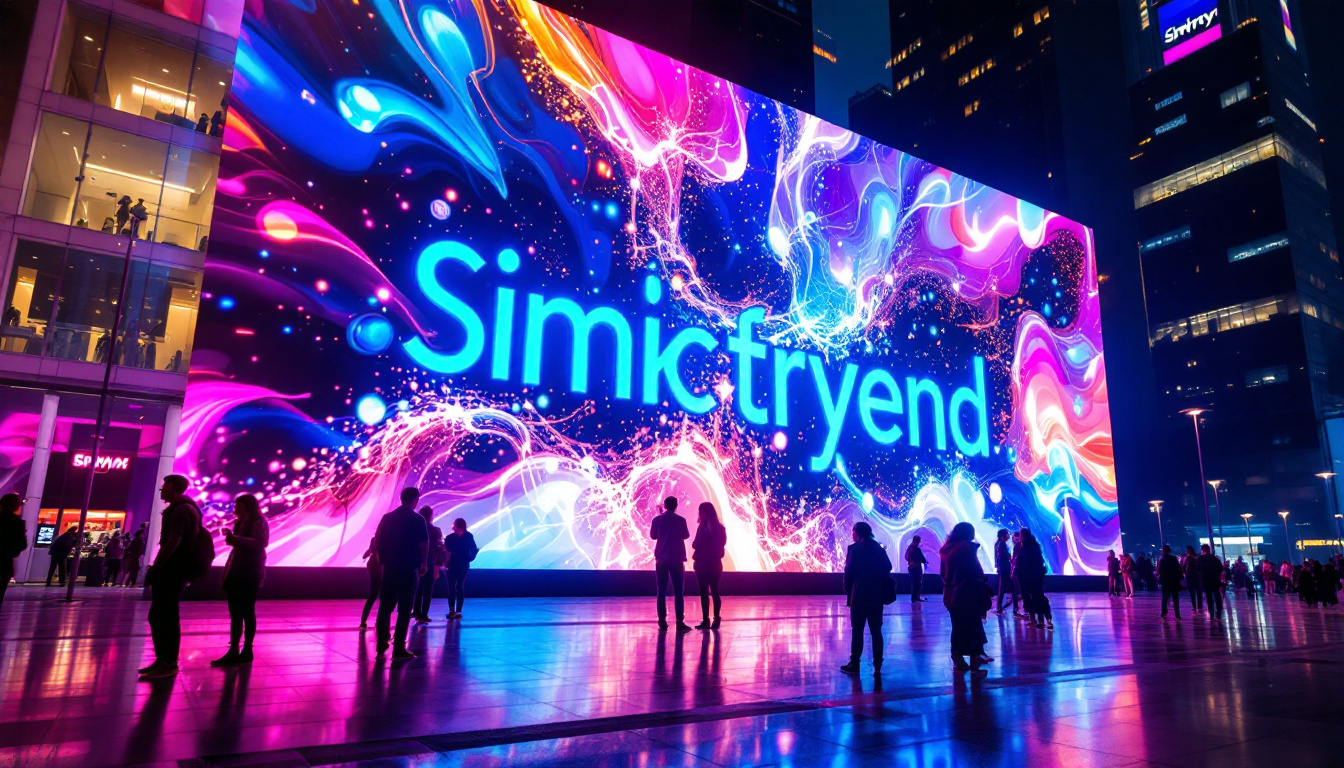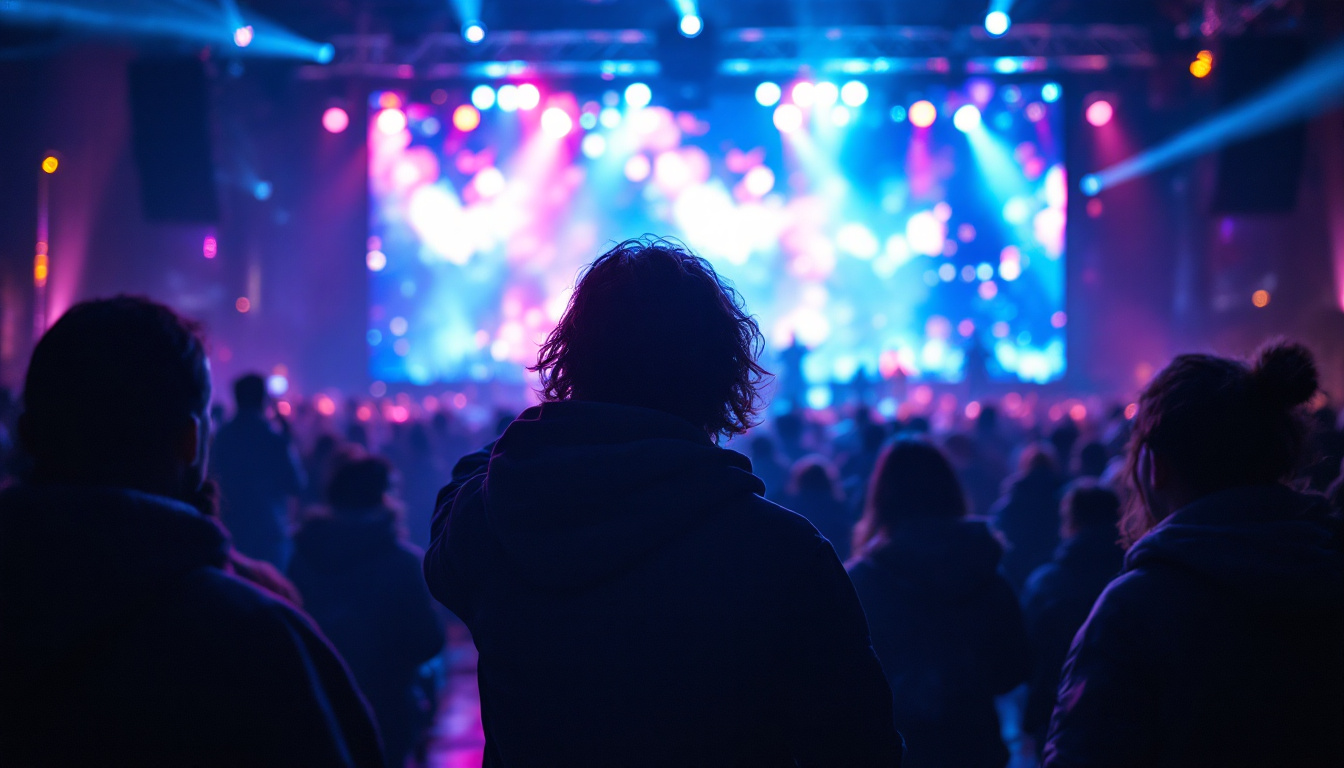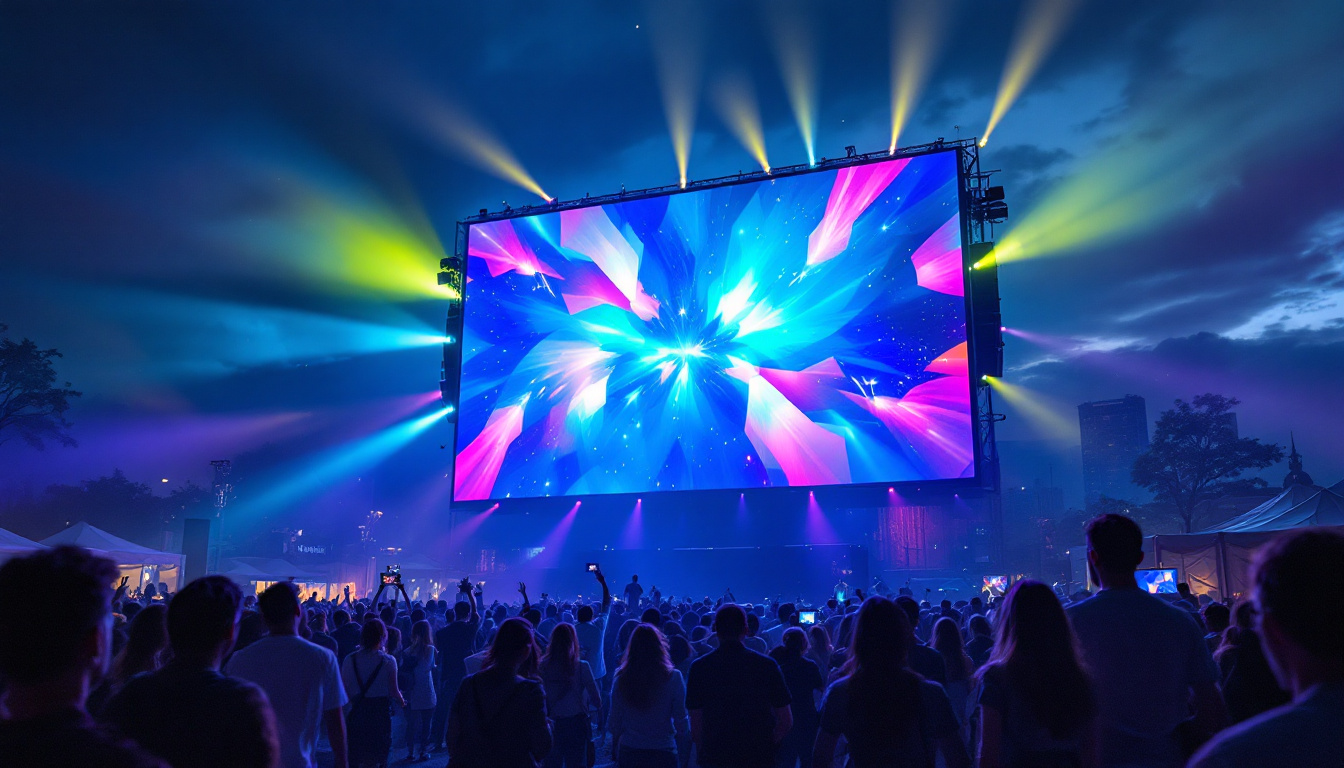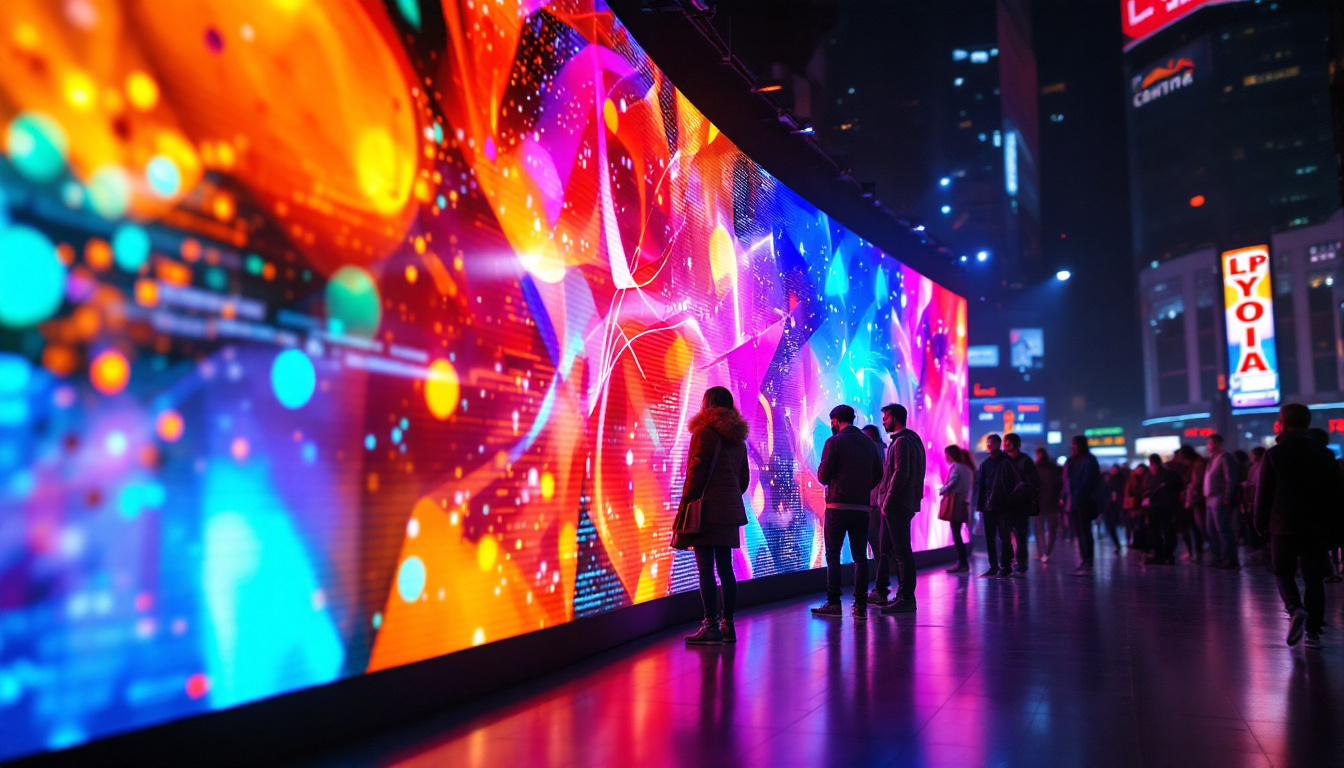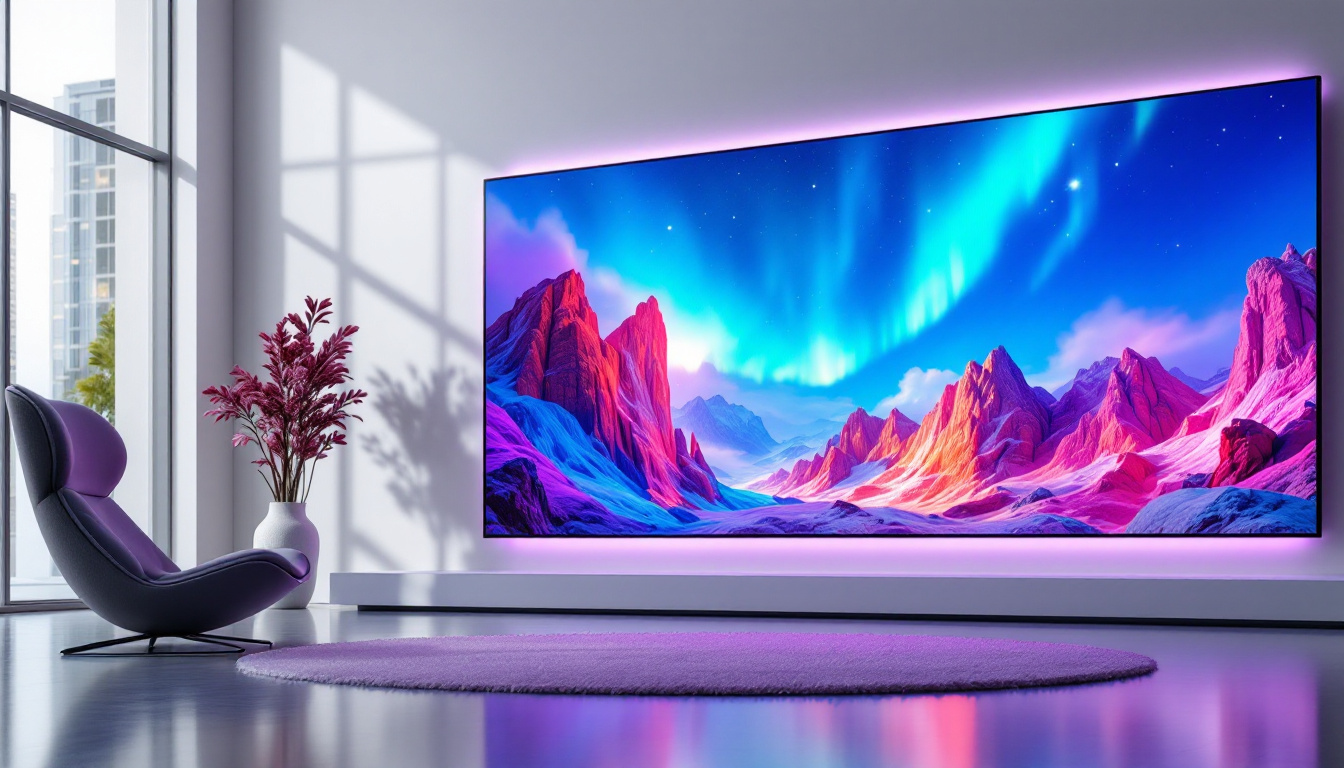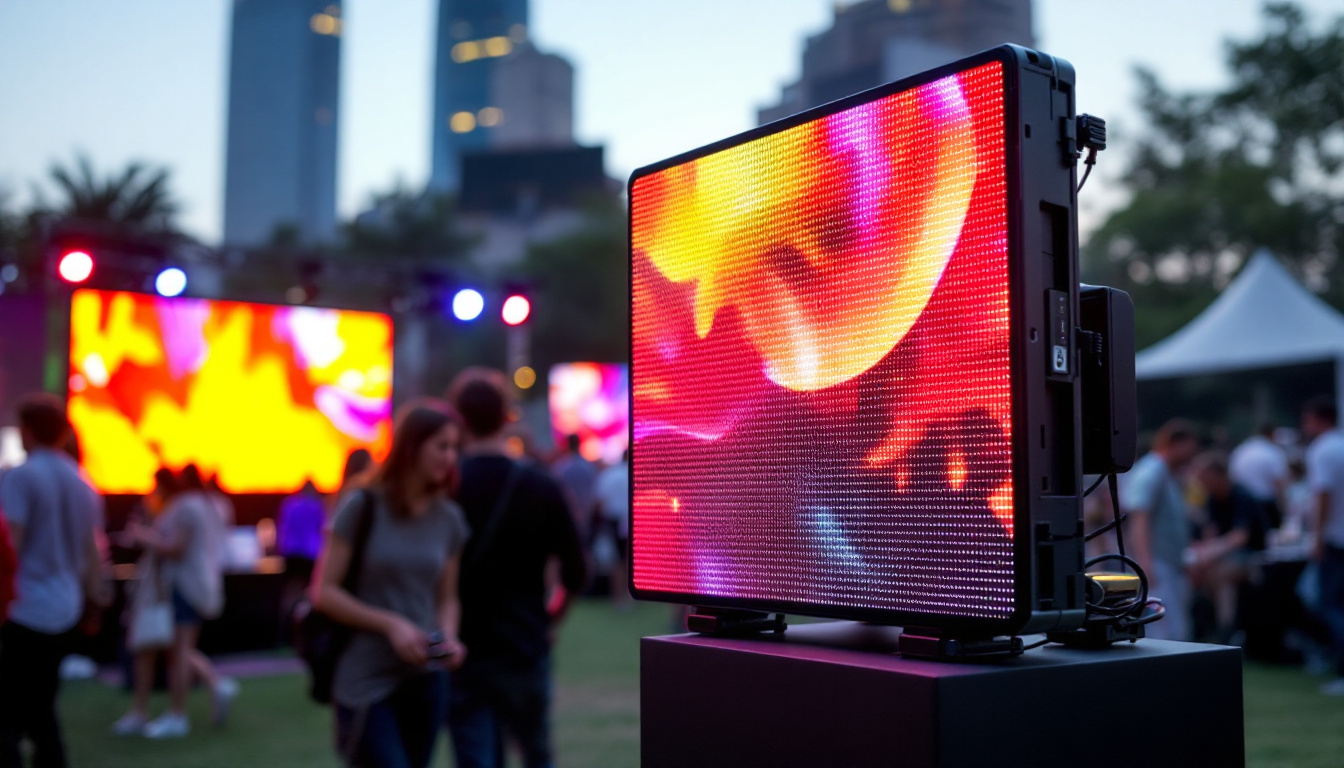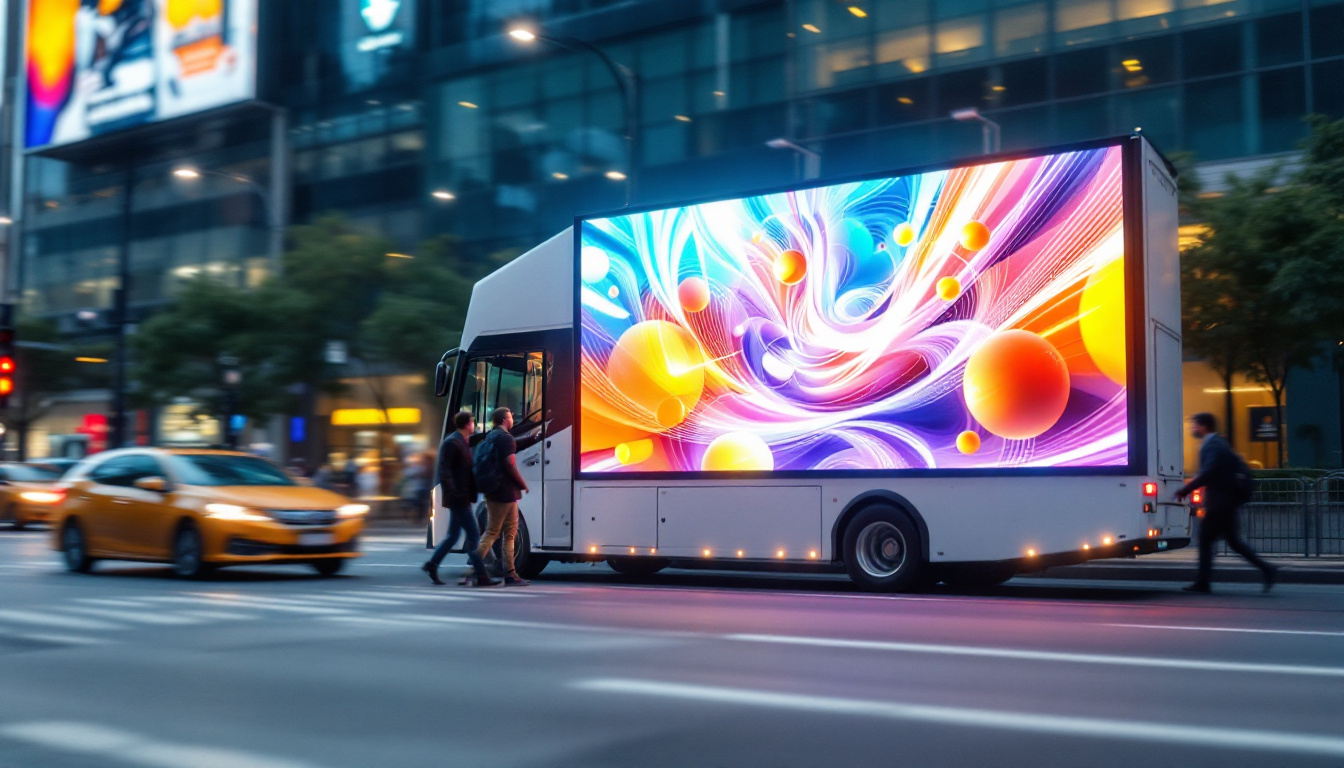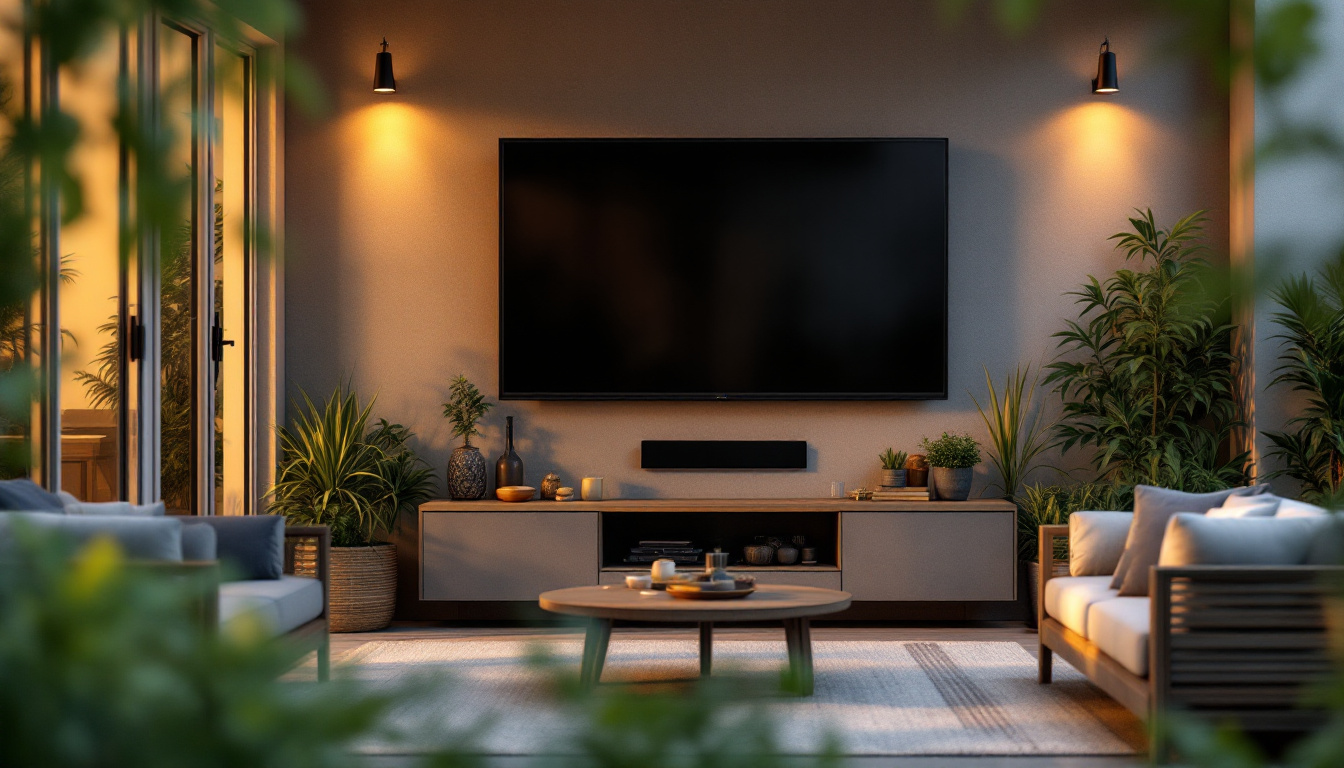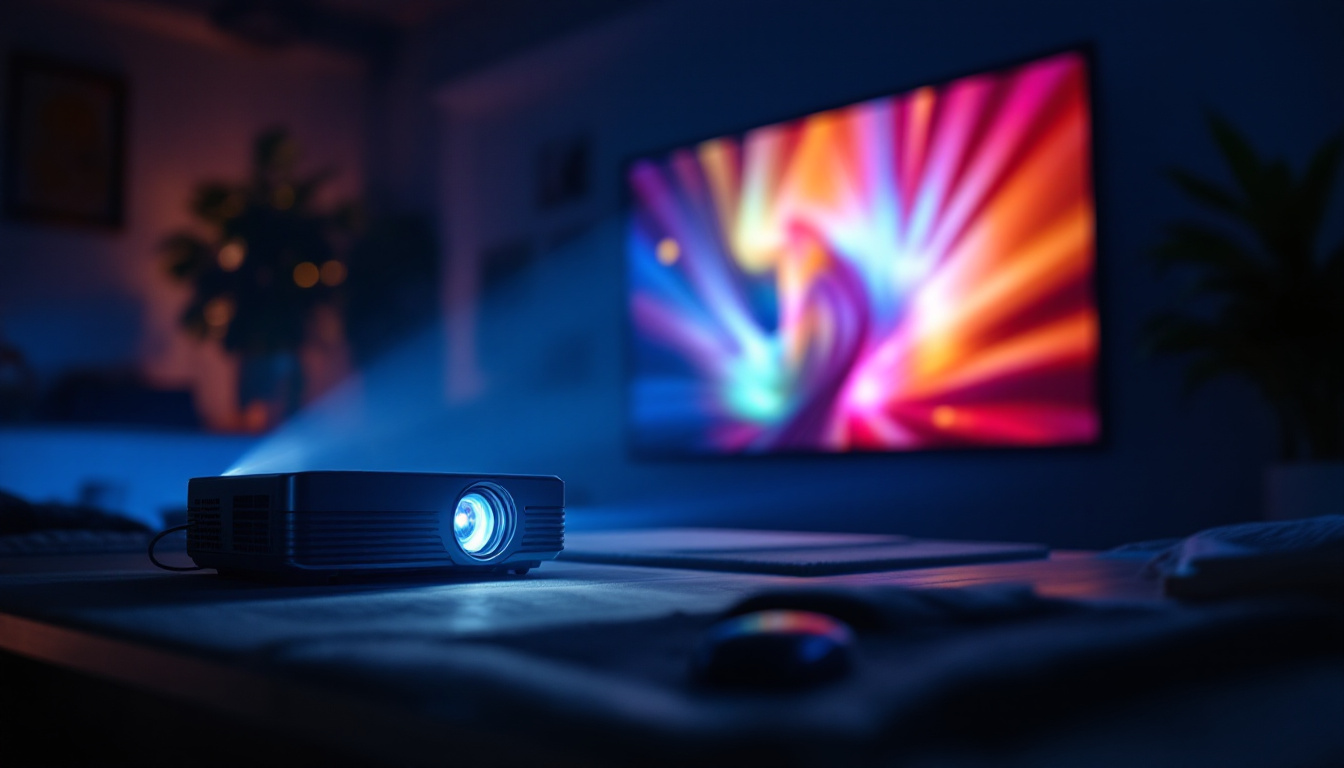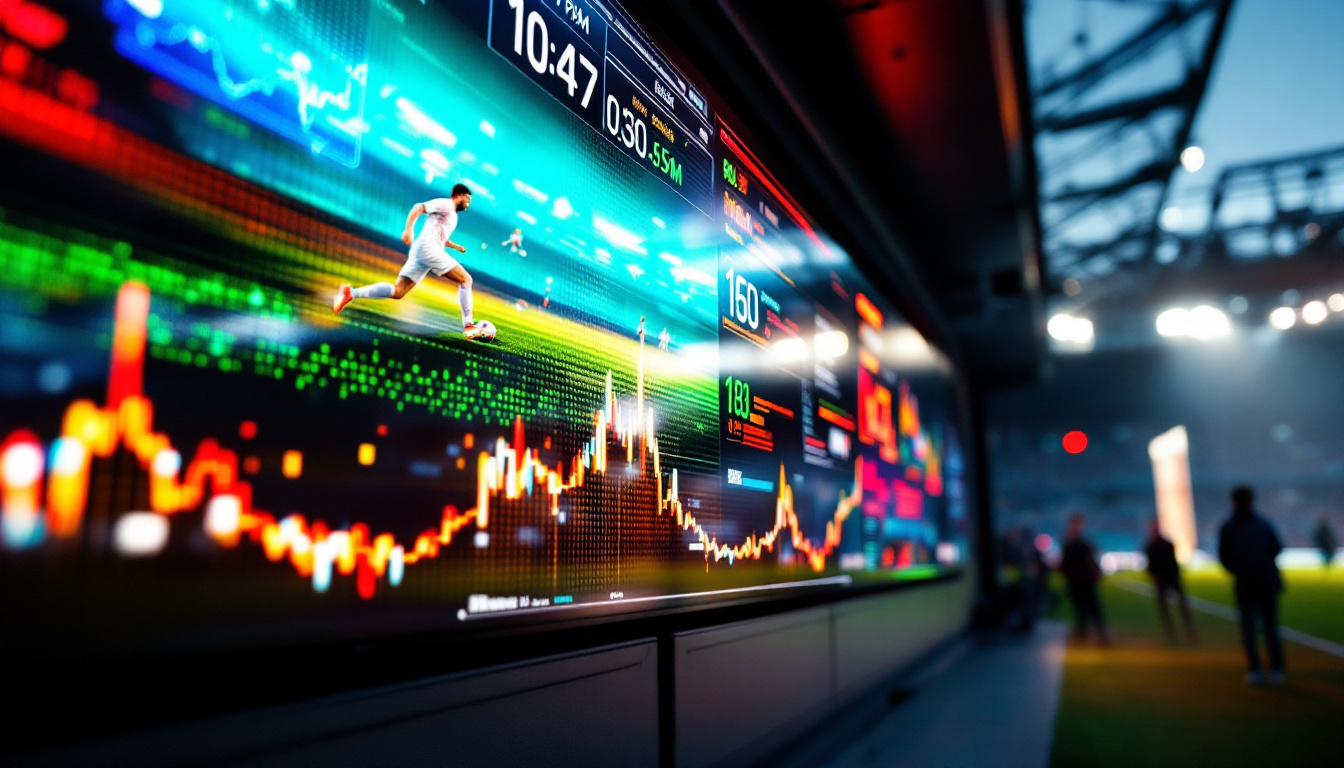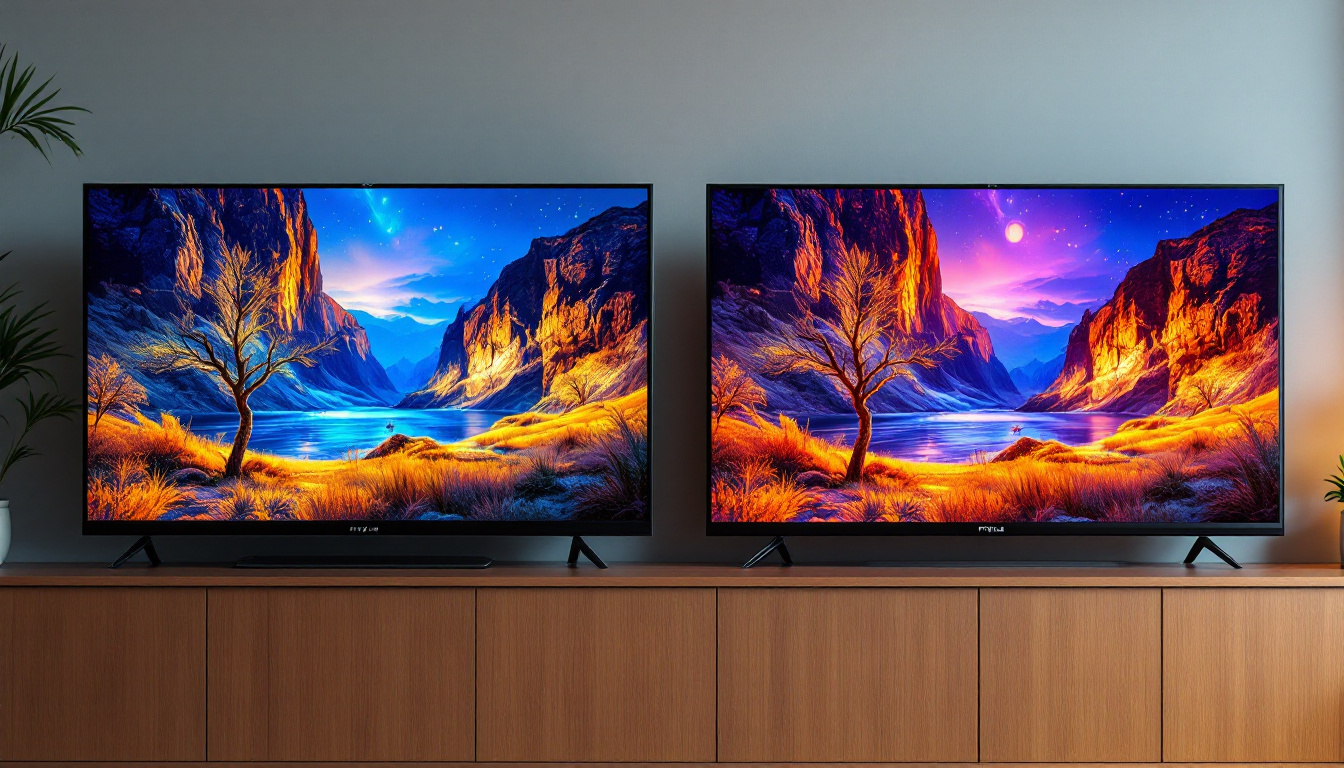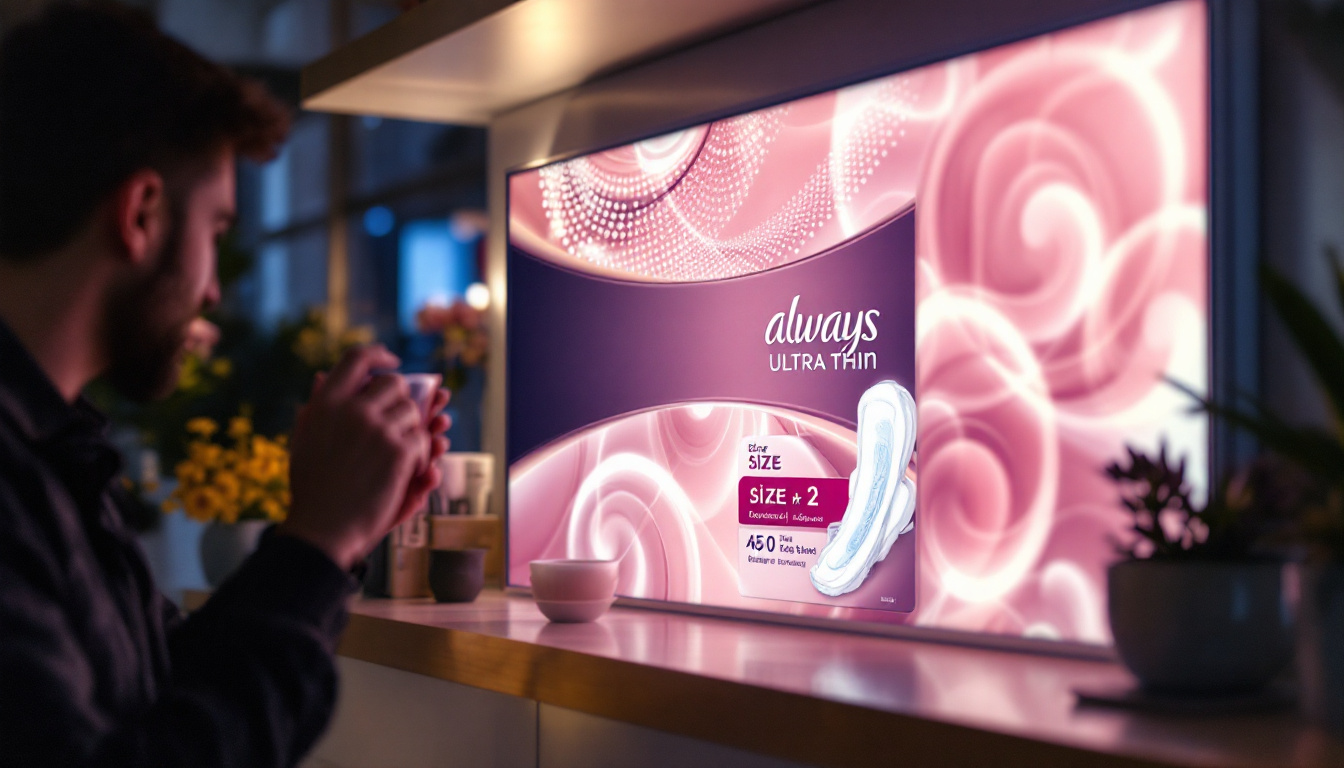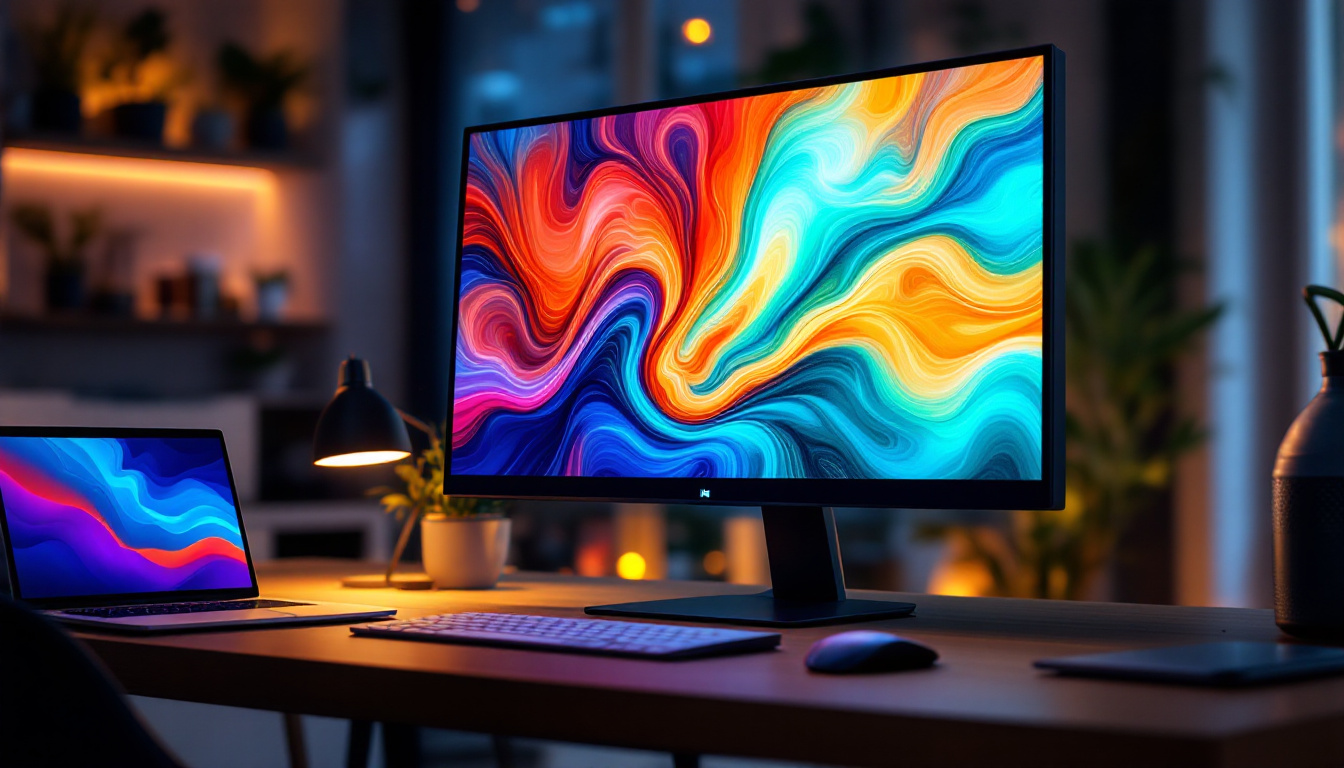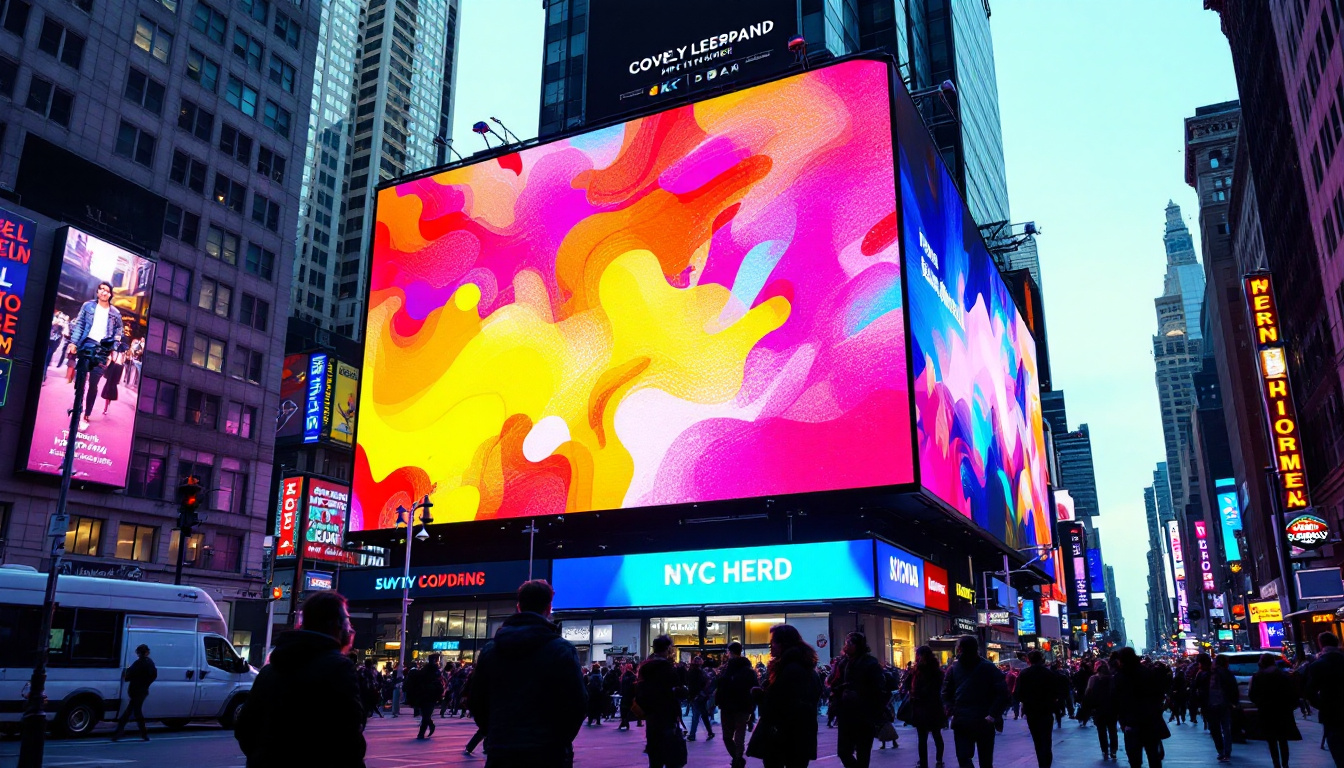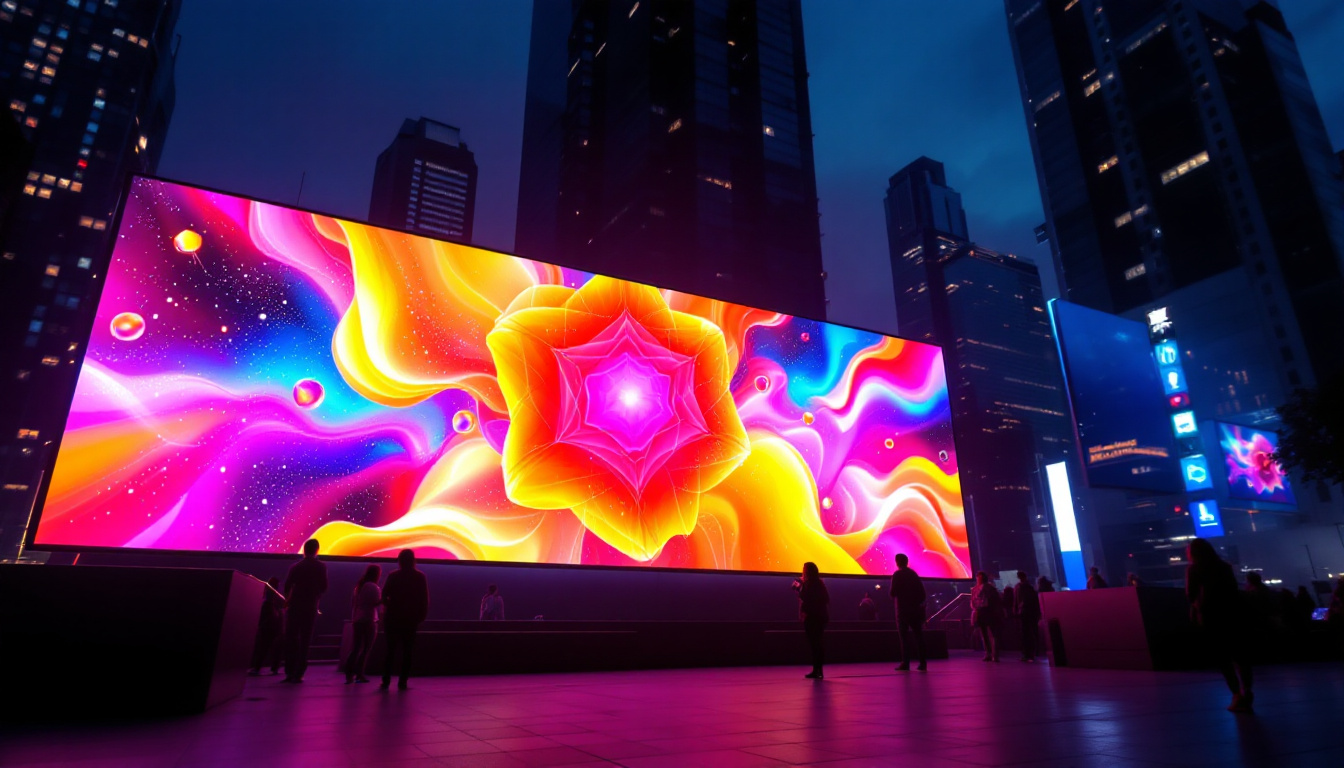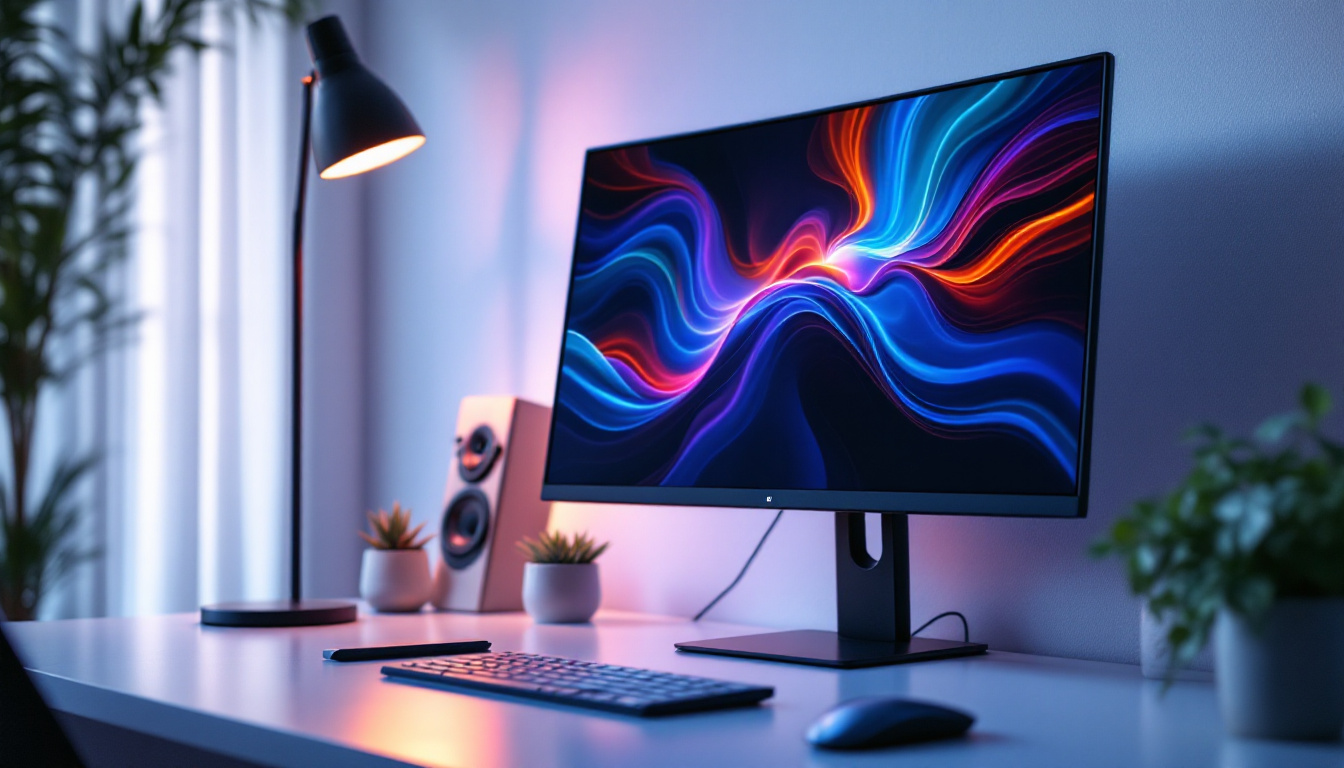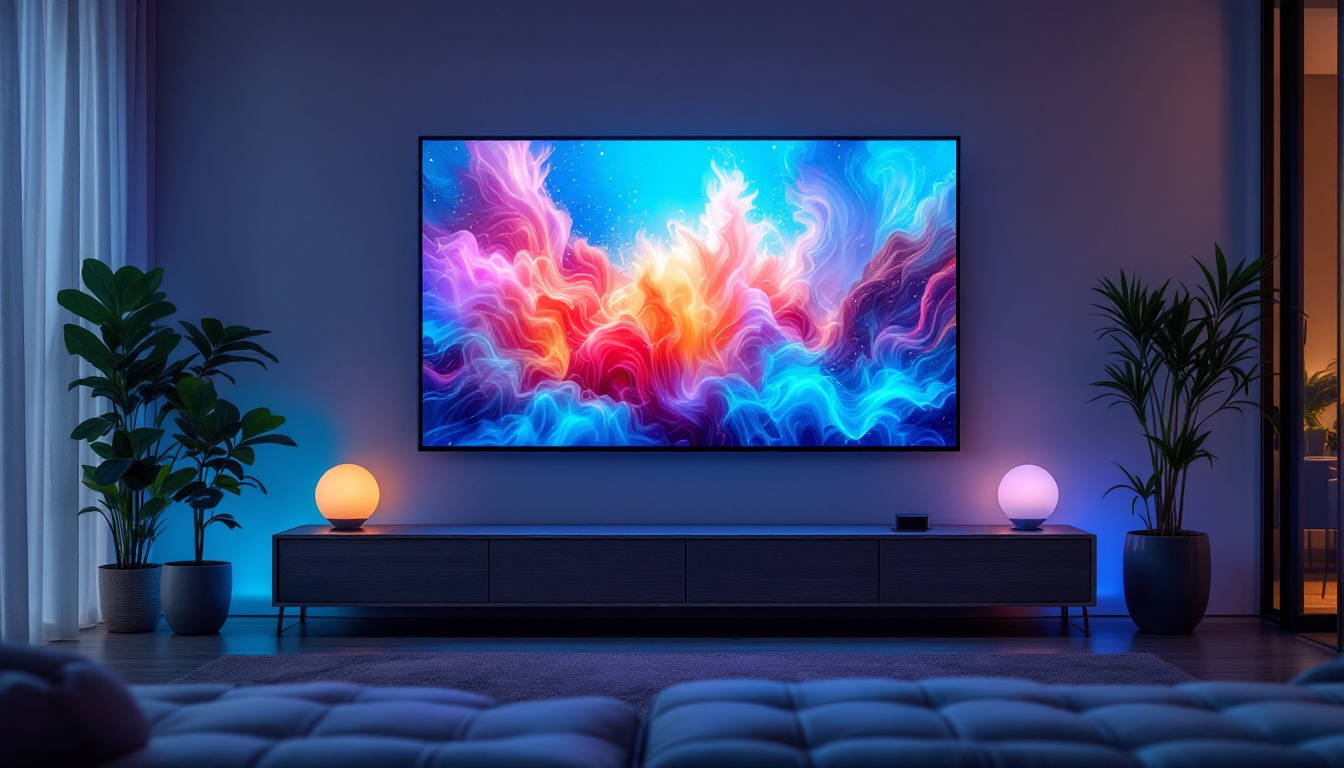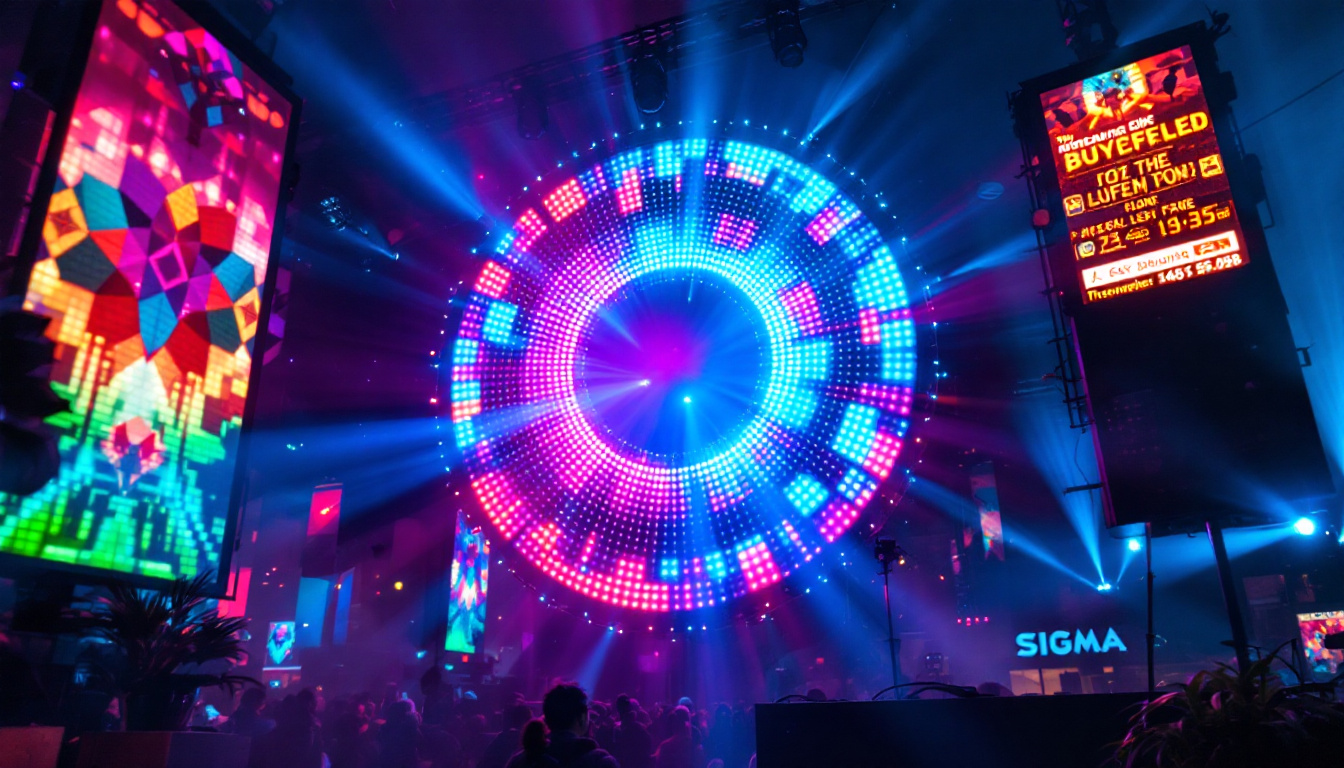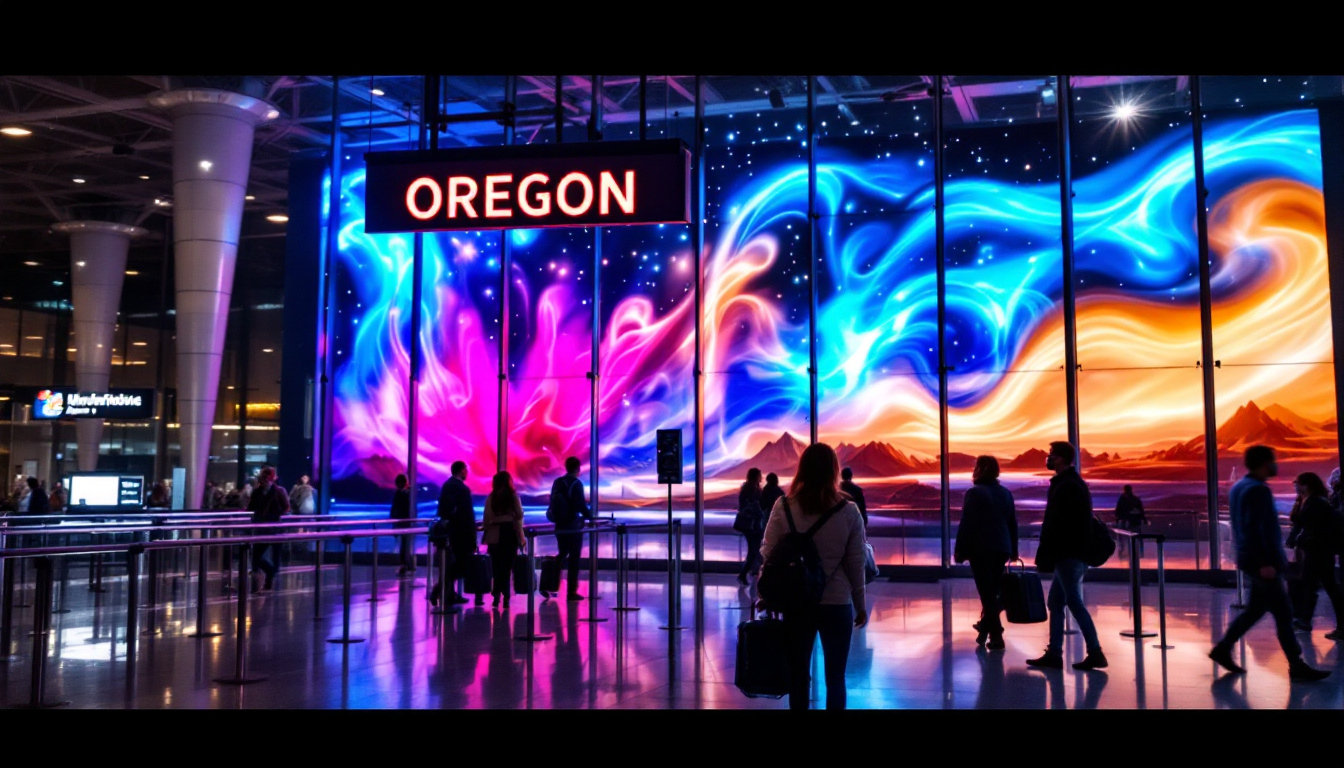In the world of visual technology, LED displays have emerged as a revolutionary force, transforming how information is presented across various platforms. From large-scale outdoor billboards to sleek indoor screens, LED technology has become ubiquitous. This article delves into the intricacies of LED displays, exploring their functionality, advantages, and applications in modern society.
Understanding LED Technology
Light Emitting Diodes (LEDs) are semiconductor devices that emit light when an electric current passes through them. This fundamental principle underpins the operation of LED displays, which consist of numerous tiny LEDs arranged in a grid format. Each pixel on an LED display is made up of red, green, and blue (RGB) LEDs that combine to produce a spectrum of colors. The efficiency and longevity of LEDs have made them a popular choice in various applications, from home lighting to large-scale advertising displays.
The Basics of LED Functionality
When an electrical current flows through the semiconductor material in an LED, it excites the electrons, causing them to emit photons, or light particles. The color of the emitted light depends on the materials used in the semiconductor. By adjusting the intensity of the red, green, and blue components, a wide range of colors can be created, allowing for vibrant and dynamic displays. This versatility is one of the reasons LEDs have revolutionized the lighting and display industries, providing energy-efficient solutions that can be tailored to specific needs.
LED displays can be categorized into two primary types: direct view and rear projection. Direct view LED displays are composed of individual LEDs that are visible from the front, while rear projection displays utilize a light source behind a screen to project images. Each type has its own set of advantages and is suited for different applications. For instance, direct view displays are often favored for their brightness and clarity in well-lit environments, while rear projection displays can create larger images without the need for bulky screens, making them ideal for presentations and events.
Types of LED Displays
LED displays come in various forms, each designed for specific use cases. The most common types include:
- Indoor LED Displays: These displays are designed for indoor environments, such as shopping malls, conference rooms, and theaters. They typically have a higher pixel density, providing sharper images and more vibrant colors. Indoor displays often feature advanced technology that minimizes glare and enhances viewing angles, making them suitable for close-up viewing.
- Outdoor LED Displays: Built to withstand harsh weather conditions, outdoor LED displays are often used for advertising and public announcements. They are designed with a lower pixel density to ensure visibility from greater distances. Many outdoor models also incorporate protective features like waterproofing and UV resistance, ensuring they remain functional and visually appealing despite exposure to the elements.
- Transparent LED Displays: These innovative displays allow light to pass through, making them ideal for storefronts and creative installations. They combine the benefits of visibility and aesthetic appeal. By blending seamlessly with their surroundings, transparent displays can enhance the architectural beauty of a space while still delivering dynamic content that captures attention.
In addition to these common types, there are also specialized LED displays, such as flexible LED screens that can be curved or shaped to fit unique environments, and high-definition LED walls that are used in concert venues and sports arenas to create immersive experiences. The continuous advancements in LED technology are paving the way for even more innovative applications, including smart displays that can interact with viewers and provide real-time information. As the demand for high-quality visual communication grows, the evolution of LED technology is set to play a pivotal role in shaping the future of display solutions.
The Advantages of LED Displays
LED displays offer numerous advantages over traditional display technologies, making them a preferred choice for many applications. Their benefits extend beyond mere visual appeal, impacting efficiency, longevity, and versatility.
Energy Efficiency
One of the most significant advantages of LED displays is their energy efficiency. Compared to traditional LCD and plasma screens, LED displays consume significantly less power, which translates to lower operating costs. This efficiency is particularly beneficial for large-scale installations, such as stadiums or outdoor advertising, where displays are operational for extended periods. Moreover, the reduced energy consumption contributes to a smaller carbon footprint, aligning with the growing emphasis on sustainability and eco-friendly practices in various industries.
Longevity and Durability
LED technology is renowned for its durability. Unlike traditional displays that may suffer from burn-in or screen degradation, LED displays have a longer lifespan, often exceeding 100,000 hours of operation. This longevity reduces maintenance costs and the need for frequent replacements, making LED displays a cost-effective investment. Furthermore, their robust construction allows them to withstand harsh environmental conditions, such as extreme temperatures and moisture, making them ideal for both indoor and outdoor settings. This resilience ensures that businesses can rely on their displays for consistent performance over time, even in challenging situations.
High Brightness and Contrast
LED displays are capable of producing high brightness levels, making them suitable for environments with significant ambient light. This feature ensures that content remains visible even in direct sunlight, a critical factor for outdoor applications. Additionally, LED displays offer excellent contrast ratios, enhancing the overall visual experience by providing deeper blacks and brighter colors. The ability to deliver vivid imagery is particularly advantageous for advertising and entertainment, where capturing the audience’s attention is paramount. Furthermore, advancements in LED technology have led to the development of ultra-high-definition displays, which provide even greater detail and clarity, making them a popular choice for high-end installations in venues like theaters and concert halls.
Applications of LED Displays
The versatility of LED displays has led to their widespread adoption across various industries. From entertainment to corporate settings, the applications are virtually limitless.
Advertising and Marketing
One of the most prominent uses of LED displays is in advertising. Billboards and digital signage utilize LED technology to capture the attention of passersby. The ability to display dynamic content, such as videos and animations, allows advertisers to convey messages more effectively than static displays. Furthermore, LED displays can be easily updated, enabling real-time promotions and announcements.
Entertainment and Events
In the entertainment industry, LED displays play a crucial role in enhancing the audience experience. Concerts, festivals, and sporting events often feature large LED screens that display live feeds, graphics, and animations. These displays create an immersive atmosphere, engaging attendees and elevating the overall event experience.
Corporate and Educational Settings
LED displays are increasingly being used in corporate environments for presentations, conferences, and training sessions. Their ability to deliver high-quality visuals ensures that information is communicated effectively. In educational settings, LED displays serve as interactive learning tools, facilitating collaboration and engagement among students.
Challenges and Considerations
While LED displays offer numerous advantages, they are not without challenges. Understanding these challenges is essential for making informed decisions when selecting and implementing LED technology.
Initial Costs
The initial investment for LED displays can be substantial, particularly for large installations. While the long-term savings on energy and maintenance can offset these costs, organizations must carefully evaluate their budgets and consider the return on investment (ROI) before committing to LED technology.
Heat Generation
LED displays generate heat during operation, which can impact performance if not managed properly. Adequate cooling systems must be in place to prevent overheating, particularly in large outdoor displays. This consideration adds to the complexity of installation and maintenance.
Viewing Angles
While LED displays offer excellent brightness and color reproduction, their viewing angles can be limited, particularly in certain configurations. Ensuring that the display is positioned correctly and that the audience is within the optimal viewing angle is crucial for maximizing the effectiveness of the display.
Future Trends in LED Display Technology
The LED display industry is continuously evolving, with advancements in technology paving the way for new possibilities. Several trends are shaping the future of LED displays, promising to enhance their functionality and applications.
MicroLED Technology
MicroLED technology represents a significant leap forward in display technology. Unlike traditional LED displays that use larger individual LEDs, MicroLEDs consist of microscopic LEDs that can be densely packed together. This results in higher pixel densities, improved color accuracy, and greater flexibility in display design. As MicroLED technology matures, it is expected to revolutionize both consumer and commercial displays.
Integration with Augmented Reality (AR) and Virtual Reality (VR)
As AR and VR technologies gain traction, the integration of LED displays with these immersive experiences is becoming increasingly important. LED displays can serve as the foundation for AR applications, providing dynamic backgrounds and interactive elements that enhance user engagement. This convergence of technologies promises to create new avenues for entertainment, education, and training.
Sustainability Initiatives
With growing concerns about environmental impact, the LED display industry is focusing on sustainability. Manufacturers are exploring eco-friendly materials and energy-efficient designs to reduce the carbon footprint of LED displays. As consumers become more environmentally conscious, sustainable practices will play a crucial role in shaping the future of LED technology.
Conclusion
LED displays have transformed the landscape of visual technology, offering unparalleled advantages in terms of energy efficiency, longevity, and versatility. Their applications span a wide range of industries, from advertising and entertainment to corporate and educational settings. While challenges exist, ongoing advancements in technology promise to address these issues and enhance the capabilities of LED displays.
As the demand for high-quality visual experiences continues to grow, understanding the intricacies of LED technology becomes increasingly important. By staying informed about current trends and innovations, organizations can make strategic decisions that leverage the power of LED displays, ultimately enhancing communication, engagement, and overall effectiveness.
Discover the Future of Visual Technology with LumenMatrix
Ready to elevate your visual communication and captivate your audience like never before? Explore LumenMatrix’s comprehensive range of LED display solutions, where innovation meets excellence. From vibrant Indoor LED Walls to dynamic Outdoor Displays and beyond, LumenMatrix is at the forefront of creating immersive experiences that resonate with viewers. Whether you’re looking to enhance brand visibility, engage sports fans, or revolutionize your advertising strategy, our cutting-edge technology is designed to deliver impact and clarity. Check out LumenMatrix LED Display Solutions today and join the visual revolution.

